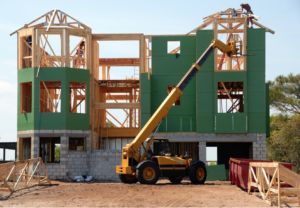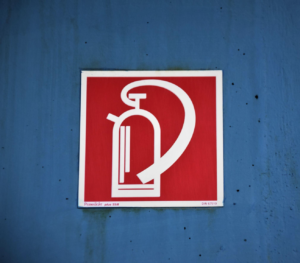Guest Blog: Fire Resistant Building Materials for New Home Construction
With the climate crisis in full effect, it appears that wildfires are on the rise. Especially in states like California, Colorado, Texas, Arizona, Montana, and others, wildfires are a huge issue. Every year there are multiple dangerous outbreaks of fire that spread across countries threatening homes and lives as they burn just about everything that they come across.
There are, however, ways to prevent a home from catching fire, even in the middle of a wildfire. By implementing fire resistant materials into new home construction, you can make a home much safer and less likely to take serious damage if it gets caught in a wildfire.
So, in case you’re interested in building a home that’s as protected as possible against wildfires, let’s take a look at some of the best fire resistant materials to use.
- Air Barriers

One of the ways that homes tend to catch fire and suck flames into themselves is by not having proper protection against outside air. There are plenty of gaps and spaces around the exterior of a home that can allow air to easily flow through, carrying and feeding flames as it does.
The most effective way to protect against this is by using an air barrier. Air barriers come in a variety of forms and they are used to eliminate air gaps so that outside air cannot break the exterior plane of a home and enter inside. While usually used to improve energy efficiency, they have the added benefit of helping protect against wildfires.
Air barriers can come in the form of adhesives, foams, or even drywall with taped seams. However, one of the most effective building construction types for providing an air barrier is the use of ICF construction. ICF construction uses a comprehensive wall system with no air gaps, creating the perfect air barrier for protection against wildfires.
It works by using hollow concrete forms surrounded by a protective waterproofing barrier and tied together with rebar. The blocks are used to build both the foundation and the walls themselves, so there are no gaps in between the foundation and the walls or between the walls and the roof. It’s all one solid piece. Towns in both California and Florida are currently implementing ICF homes as a solution to potential wildfires.
- Fire Resistant Roofing

Roofing is another area in which you can fortify a home against potential wildfires. Terracotta roofing, for example, is incredibly fire resistant. A terracotta roof is made from clay, which has the highest fire rating possible. Using these clay tiles on your roof will help protect it from the many falling embers and ashes that are likely to fall on it during a wildfire.
There are also many different styles to choose from and terracotta roofing is durable against rot and other forms of deterioration as well.
- Passive Protection

Passive fire protection is often the first line of defense against wildfires. While fire extinguishers and sprinklers are great for saving a home once it’s been infiltrated by flames, passive fire protection aims to prevent the flames from ever getting inside or near the home.
Smoke baffles, fire-resistant glass partitions, and fire doors are all examples of passive fire protection you can implement into a home. If you really want to ensure maximum protection, you can even include smoke curtains.
These materials all help to cull the spread of flames and keep the damage limited to a certain area, while preventing smoke from filling the entire home. ICF walls are technically considered passive fire protection as well because of their fire resistance.
One California man even went so far as to include fire-repellent gel on the outside of his windows and vegetation surrounding his home. The vegetation was soaked in water by a solar-powered sprinkler system.
This acted as a fire retardant that prevented flames from ever getting near his home. He was able to keep his home safe despite 200 other residential homes burning to the ground around him in the notorious Kincaid fire.
Another option is to use mud blocks in the construction of a home. These blocks are made primarily from compressed soil and moisture, resulting in durable blocks that don’t crumble or catch fire in a blaze. This is a great option for those looking to keep a fire-resistant home as affordable as possible while also ensuring protection from wildfires.
Fire Protection is a Must in Certain Areas of the Country
If you want to build a home in an area of the country that’s prone to wildfires, you need to take the right steps to ensure it can withstand a blaze and not take damage. Active fire protection methods like smoke detectors and fire extinguishers are great as a last line of defense, but passive fire protection will do the most to protect your home from flames.
Terracotta roofing, ICF construction, mud block construction, and air barriers are all great ways to prevent flames from getting inside your home where they will almost certainly burn it to the ground.
Other passive fire protection methods like having a perimeter of vegetation soaked by a solar-powered sprinkler, as well as a fire-proofing gel for your windows, smoke curtains, fire-resistant glass partitions, fire doors, and smoke baffles are all additional methods of fire protection you can implement to make sure your home stays standing, even in the middle of a wicked blaze.
Roger Marx is a contributor to the Innovative Building Materials blog. He is a content writer for the construction and home improvement industries with an interest in landscaping, outdoor remodeling, and home renovation. Roger is focused on educating homeowners, contractors, and architects on innovative materials and methods of construction that increase property value and improve sustainability.
